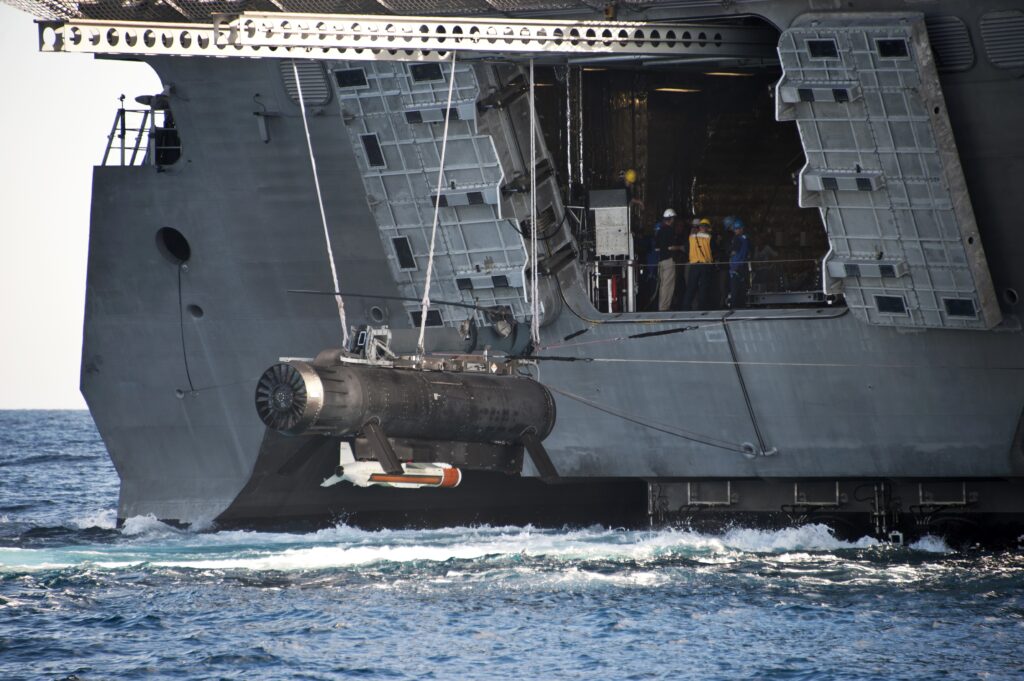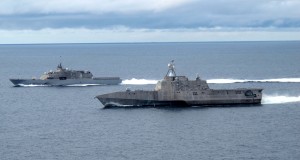 |
| An unmanned mine-hunting mini-sub, the Remote Multi-Mission Vehicle (RMMV)
WASHINGTON: In a letter obtained by Breaking Defense, senators John McCain and Jack Reed slam a key component of the Navy’s Littoral Combat Ship as unreliable and urge the Pentagon to explore alternatives to the Remote Mine-Hunting System.
In their Aug. 31 letter to the Pentagon’s acquisition chief, Frank Kendall, Navy Secretary Ray Mabus, and outgoing Chief of Naval Operations Adm. Jonathan Greenert, the Senate Armed Services Committee leaders warn against a “rush to failure” and strongly suggest a “delay,” especially since key decisions on the LCS Mine Countermeasures (MCM) module are set for October and February,
The Littoral Combat Ship has been the Navy’s most hated program since its inception, andMcCain has been a persistent critic. The core concept — a lightweight warship that could switch missions by loading different mission packages of equipment — remains controversial with naval traditionalists who see LCS as fragile and under-gunned. The ships themselves have largely overcome their early problems with cost overruns and quality control. But LCS can’t do much without its mission packages, none of which is completely finished.

The two Littoral Combat Ship variants, LCS-1 Freedom (far) and LCS-2 Independence (near).
The most complex module — and arguably the most important given the Navy’s long neglect of the massive mine threat worldwide — is the Mine Counter-Measures (MCM) mission package. It’s currently undergoing a series of technical tests, already extended due to mechanical problems. That narrow technical evaluation will determine whether MCM is ready for a full-up operational evaluation, which in turn will determine whether MCM is ready for production. The Pentagon will decide whether to go ahead with Initial Operational Test & Evaluation in October.
The crux of the problem is an underwater drone meant to seek out submerged mines. The official names are the Remote Multi-Mission Vehicle (RMMV) — if you’re just talking about the unmanned vessel, made by Lockheed Martin — and the Remote Mine-Hunting System — if you’re talking about it fully kitted with a Raytheon sonar. It’s a “semi-submersible” system that projects slightly above the water, neither a submarine nor a boat but something in between. The Navy will decide in February whether to award a production contract for more RMMVs.
So what’s the problem? The drone’s supposed to go for 75 hours, on average, between failures. According to the Pentagon’s top tester, it manages just 25. (The Navy says itstesting shows 200 hours between failures). That’s despite years of work to make it work better. “Recent developmental testing provides no statistical evidence that the system is demonstrating improved reliability, and instead indicates that reliability plateaued nearly a decade ago,” wrote the director of operational test and evaluation, Michael Gilmore, in an August 3 memo.
So maybe it’s time to cut bait, the senators suggest, none too gently,
With the mine threat especially urgent in the Persian Gulf, the Navy hasn’t waited for MCM-equipped Littoral Combat Ships to show up. Instead, it’s fielded mine warfare systems piecemeal and found out what works. McCain and Reed recommend three in particular for the Pentagon to review:
“The decisions made over the next six months will set the course for our nation’s maritime [mine warfare] capabilities for decades to come,” the senators write. “Too much is at stake to accept the status quo and permit systems with long documented cost, schedule, performance, and reliability shortfalls to get a free pass into the fleet.”
|
Wednesday, 9 September 2015
McCain, Reed Push To Replace LCS Mine Drone
Labels:
LCS,
LRIP,
Mark18,
MCM,
Minehunting,
Mod2Kingfish,
Nunn-McCurdy,
RMMV,
swordfish,
UUV
Subscribe to:
Post Comments (Atom)




No comments:
Post a Comment